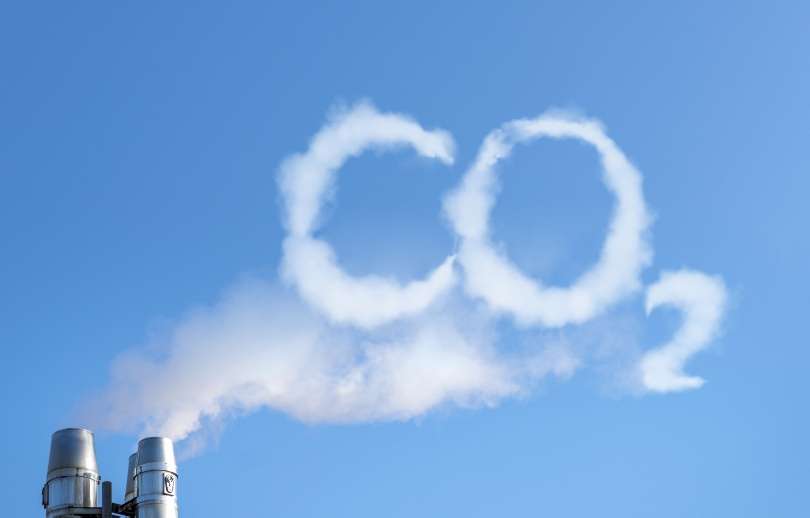The country emits 737 million tons of CO2 per year; the Energy sector generates 64% of greenhouse gases
MEXICO CITY, (October 02, 2021).- The update of the National Inventory of Greenhouse Gases and Compounds, establishes that Mexico generated in 2019, 737 million tons of carbon dioxide (CO2), which is the main cause of global warming, which places us among the 13 most polluting countries on the planet.
María Luisa Albores González, head of the Ministry of Environment and Natural Resources (Semarnat), highlighted that thanks to the absorption of CO2 by forests and jungles, it was possible to reduce 193 million tons, to adjust the generation by 535 million tons. tons of CO2 equivalent in 2019.

Although we are among the largest emitters, it is also necessary to specify that we are far from China or the United States, which have much higher emissions than Mexico, between 13 and 9 times more, respectively, ” she said.
In the series of results from 1990 to 2019, the generation of Greenhouse Gases (GHG) in Mexico, grew 62 percent at an annual rate of 1.6 percent, being the energy sector the one that generated more CO2, where they are included fugitive emissions from oil, gas, and mining.
Net emissions in 2016 were 600 million tons, in 2017 551 million tons, in 2018 570 million tons, and in 2019 with 535 million tons of reported carbon dioxide.
The inventory shows that 64 percent of emissions in our country come from the use of energy in all sectors; 19 percent from agriculture, forestry and other land uses, mainly livestock; 10 percent from other industrial processes and product use; and 7 percent to waste management ”, stated María Luisa Albores.

MAIN ISSUERS
In the area of main generators, the production of electrical energy stands out with 171 million tons of carbon dioxide, which represents 23.3 percent of the national contribution.
It is followed by motor transport with 136 million tons (18.5 percent); and bovine production from fermentation and excreta handling with 98 million tons (13.2 percent).
In fourth place are the final disposal sites of waste with 29 million tons (3.9 percent), while in fifth place is the treatment and disposal of municipal and industrial wastewater with 23 million tons (3.1 percent).
Paulina Cárdenas, representative director of Measurement, Reporting, and Verification of the National Institute of Ecology and Climate Change (INECC), highlighted that there are slight increases in the bovine industry and agriculture because there is an increase in food production and economic activity.
She indicated that in the waste part, there are upward variations due to final disposal in sanitary landfills, controlled and uncontrolled sites, as well as the treatment of wastewater or the incineration of hazardous waste.
CRUDE PRODUCTION
Fabiola Ramírez, director of Gases and Greenhouse Compound Emissions Inventories and Prospects at INECC, revealed that the six refineries in the country represent 1 percent of GHG at the national level.
The Tula refinery is one of the largest, the contribution between the six refineries is more or less in the same order, however, the Tula refinery could be slightly higher, but we do not have the disaggregated data, ” she clarified.
MAIN REDUCTIONS
Regarding the decrease in emissions, the report highlights the decrease in the use of gasoline in motor transport, as part of the energy sector.
This trend is observed in 2017, 2018, and 2019, so the INECC is already conducting a study inside to find out the reasons, which it anticipates, could be due to technological changes, the price of fuels, or the efficiency of gasoline.
The causes and effects are sometimes multifactorial, we have the data that each sector gives us, which is recorded and when we observe this type of thing, we start studies to understand if they are due to mitigation or because economic activity decreased at certain times ” , commented the general director of INECC, Amparo Martínez.
The representative director of Measurement, Reporting, and Verification of the INECC, explained that the absorption of 193 million tons of CO2 in 2019, was achieved mainly by the dynamics of ecosystems, land, and the permanence of forests, crops, and shrubs, which work as carbon sinks.
In this sense, the head of the Ministry of Environment and Natural Resources assured that ecological reserves are the best instrument for mitigating climate change, as well as for the conservation of ecosystems and biodiversity.
So Semarnat is committed to increasing the number of protected natural areas, such is the case that we are working in the Sierra de San Miguelito in San Luis Potosí, and the Valle de Texcoco, which is also about to come out, ” she announced.
For his part, Miguel García García, representative director of GHG Emissions Prospects of the INECC, announced that there are 72 thousand absorption tracking points in forest areas, with which it can be interpreted how each ecoregion of Mexico is behaving.
Source: Excelsior
